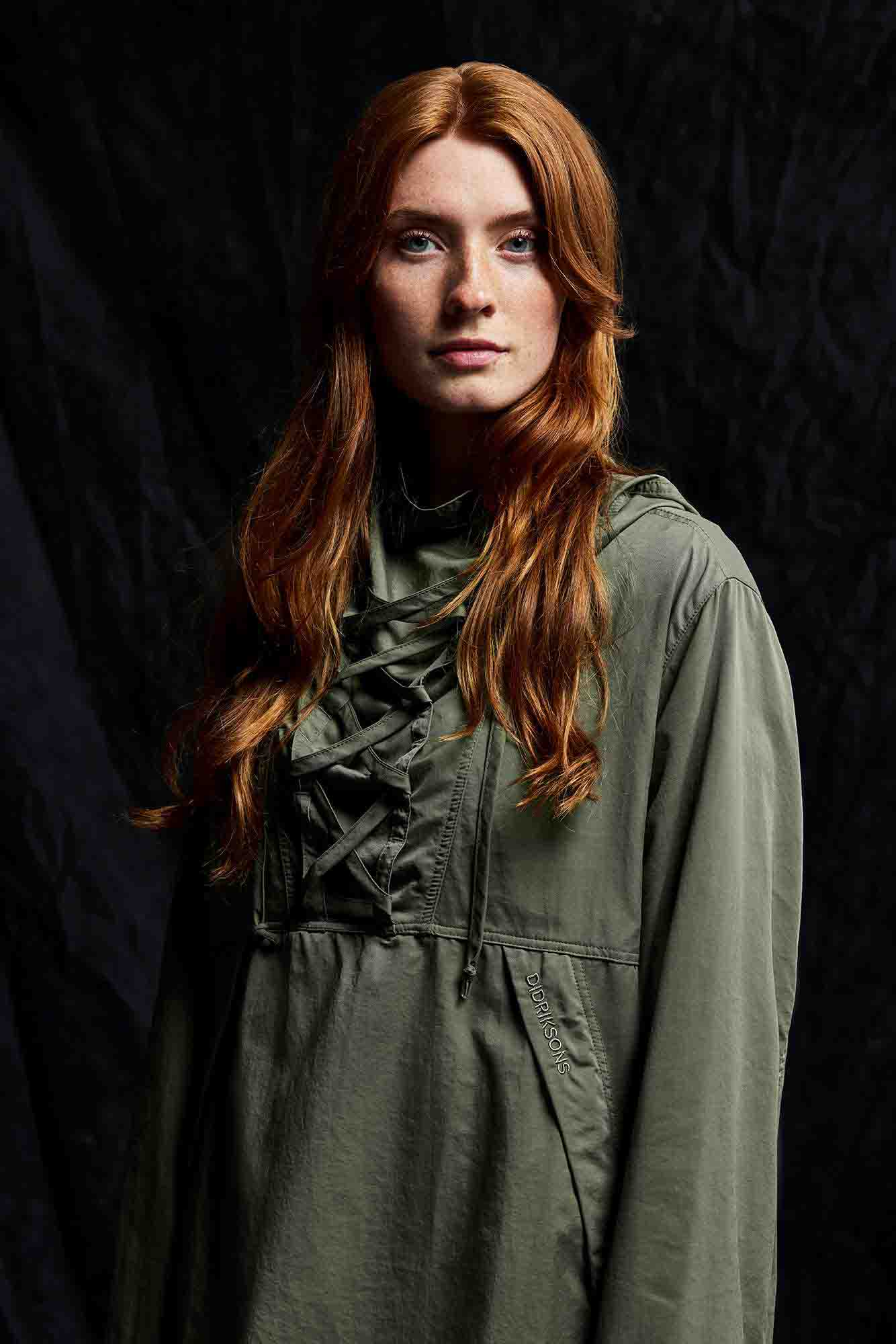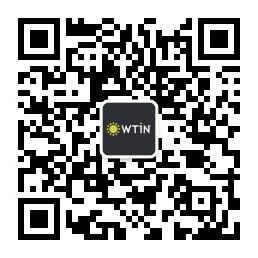
In this special podcast series, we speak to the winners of the WTiN Innovate Textile Awards 2024.
In this episode Giovanni Henssen, business development manager sustainability at Fibrant discusses the company’s Product Innovation Award win, with their entry titled: EcoLactam® and Didriksons: Pioneering sustainable fashion through value chain collaboration.
Fibrant’s commitment to reducing environmental impact through innovative material choices is commendable. By selecting EcoLactam, the most sustainable nylon precursor from Fibrant, Didriksons demonstrate the potential for significant impact reduction, as supported by shared data. While further validation of durability is encouraged, its focus on sustainable material selection underscores the brand’s dedication to environmental responsibility.
In this episode, Henssen explains what makes EcoLactam so innovative and shares why winning WTiN’s Product Innovation Award is an important milestone for the company. He delves further into the Fibrant’s partnership with Didriksons and explores wider industry sustainability challenges. If you would like to learn more, please visit fibrant52.com.
You can listen to the episode above, or via Spotify and Apple Podcasts. To discuss any of our topics, get in touch by following @wtincomment and @abi_wtin on X, formerly Twitter, or email aturner@wtin.com directly. To explore sponsorship opportunities, please email sales@wtin.com.
Have your say. Join the conversation and follow us on LinkedIn
-
Transcript
This transcription has been AI generated and therefore may have some inaccuracies.
Ep. 107: Product Innovation Winner
In this special podcast series, we speak to the winners of the WTiN Innovate Textile Awards 2024.
WTiN: Hi Giovanni, thank you for joining me today on the WTiN innovate podcast, and congratulations on Fibrant’s win in our innovative textile awards this year. Can you share the story behind your winning innovation and what inspired its development?
Henssen: Yeah, we Fibrant as an upstream feedstock producer for nylon. We are considered to be tier four for many brand owners, and being a tier four, we kind of out of sight. Typically, brand owners work with their tier 1, 2, 3, when you look for innovation, but if you're looking to improve sustainability of your nylon based textiles, you have to look more upstream to gain most, given the high impact that I collect down can offer. We approach these to collaborate, given their clear ambitions to reduce their carbon emissions with more than 50% so. And Nicola Tom can deliver a significant contribution to this.
WTiN: And what challenge or gap in the textile industry does your innovation address?
Henssen: A big challenge in the textile industry these days for brands is to reduce their scope three emissions at scale for brands, in the out of the total emissions, scope three is relates to everything they source. Okay, so therefore scope three emissions for brands are by far the biggest part of their emissions, more than 95% many sustainable innovations such as bio based polymers are often offered at small scale or have challenges to meet the required quality standards.
The contrary, EcoLactam down there is immediately available in large volumes without any compromise on quality, and therefore can make an immediate impact on the environment. And that's the gap that we, we can, we can cover.
WTiN: You just kind of touched upon it there. But what sets EcoLactam apart from other similar products in the market, and how do you see it disrupting the industry moving forward?
Henssen: Well, EcoLactam is a nylon with the same quality as Virgin Island regular nylon, because it's made with a special technology, partly patent protected by us, this makes a product that, from a quality perspective, is absolutely equal to reglan island, but has a much, much lower carbon footprint. Now, the fact that we make this at large scale, it makes it makes it special. So the combination of zero compromise on quality with a large scale production capacity makes a true impact on your scope. Three emissions immediately tomorrow. That's the biggest difference.
WTiN: Wonderful. And winning the Innovate textile awards is a huge achievement. What does this recognition mean to you and your team?
Henssen: Well, it's kind of a confirmation that our chosen direction and investments done in our process is the path forward for the whole textile industry. We hope that this achievement, the spy, inspires other brand owners to reduce their scope three significantly as well, and it can be done actually, in a very, very short period of time.
WTiN: Amazing. And what was the biggest hurdle you faced while developing EcoLactam and how did you overcome it?
Henssen: The biggest, the biggest challenge, was to connect the complete value chain from all the way from tier zero, the brand owners, to especially tier two, the fabric manufacturer, tier three, the garment the yarn maker, and us being tier four, the, let's say, the raw material producer. But it's an absolute must to connect all parties together and and and coordinate and be very persistent, because everybody has their own priorities and their own challenges, but it starts with the commitment from each party in the value chain to make it happen. And we are very, very proud that Didriksons took the leadership position here, which helped tremendously in connecting, let's say, all partners in the value chain.
But being very persistent and take a leadership role and have everybody on the same page is absolutely critical.
WTiN: That leads on really nicely to this next question. And so obviously you collaborated with Didriksons. How did that collaboration come about, and how did you work together to create that final product?
Henssen: Well, from the very, very beginning, we work very, very closely with Didriksons, who did a perfect job in designing a garment that scores very high on all sustainability aspects. It is made out of low carbon footprint. I clock down nylon. It's trim free. So to make recycling at the end of life much easier, and it's using a bio based waterproof coating. It is the combination of all these three aspects that make the product very unique. But we needed the complete value chain and external partners to collaborate on that. But again, Didriksons took a very important role there to connecting everybody in the value chain,
WTiN: And obviously sustainability and circularity in your approach to the value chain is so important. But why is this so integral to what you offer?
Henssen: Well, sustainability is a hot topic for everybody. If you look at the sustainability reports of almost every brand owner at this point, they all point to the same direction. They have to do better in sustainability and carbon dioxide, CO two reduction is a must. It's not it's not voluntary anymore. It's almost set by law.
But also, consumers are voicing much stronger than ever, that they do not accept any polluted products anymore. We help them and have a sustainable, high quality and durable solution. The fact that all brand owners share the same opinion that carbon emissions have to be reduced, that gives us the give us the confidence that the market is ready for this type of innovation.
WTiN: You mentioned it then about customers demanding more sustainability. Did customer or industry feedback play into your creation of EcoLactam?
Henssen: Yeah, absolutely. The fact that the again, that the brand owners, everybody has been focusing last couple of years reducing their scope one and two. As we say, with scope one and two, emissions for brand owners is related to their own production or their own energy consumption, which is typically very low. And this is what most brand owners have tackled so far, and they have improved tremendously. Did a great job there. The next step is to tackle the scope three, which is more difficult because that's everything they purchase. The good thing is that all brand owners, almost without any exception, are looking into that and how to reduce their scope three. Now, as a nylon solution provider, we approach them and we say, Okay, we have a potential solution for you here, they have a strong ambition. Many brand owners have very, very strong ambitions to reduce their total emissions with 3040, even up to 50% some even want to go to climate neutral in 10 to 15 years from now. But the fact that they all have these strong ambitions to reduce their emissions, that's that. That was for us, the, let's say, the starting point to approach them with our solution.
And again, there's the newest generator, younger generations. They consumers, they demand sustainable products. And that helps, of course, in pushing this forward.
WTiN: And what advice would you give to any aspiring innovator or company hoping to make their mark in the textile industry?
Henssen: Be patient and persistent. The textile industries has many, many challenges, and sometimes in the value chains are very complex to connect with each party, and ensuring there is a win for each party takes time. But once it demonstrated that there is a win for everybody in the value chain, things can accelerate, but typically takes time to convince and talk and get on board with every partner in the value chain, because the value chain in the textile industry can be very long.
WTiN: And finally, how do you hope your innovation will inspire others in the industry to prioritize sustainability and creativity?
Henssen: Well, this project with Didriksons demonstrates that if all parties in the value chain have an open communication and share the same ambitions and are committed to make a change that can be done. So we definitely hope that this project and the success of this project inspires other brand owners to do exactly the same
WTiN: Wonderful thank you so much Giovanni for joining me today on the WTiN innovate podcast.
Henssen: Thank you very much.



